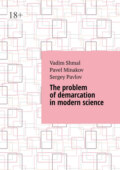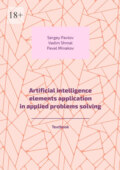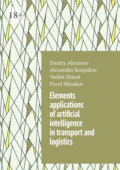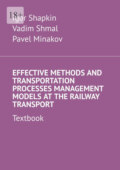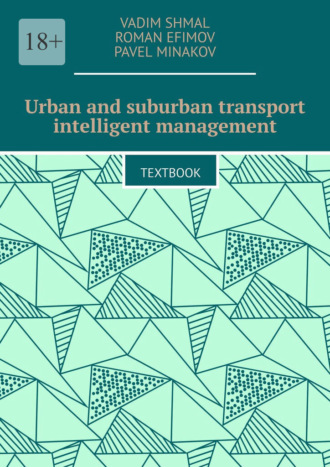
Vadim Shmal
Urban and suburban transport intelligent management. Textbook
© Vadim Shmal, 2022
© Roman Efimov, 2022
© Pavel Minakov, 2022
ISBN 978-5-0059-3137-5
Created with Ridero smart publishing system
Introduction
The authors of the textbook focused on the consideration of existing and promising information technologies in transport from the standpoint of automated control of the transportation process, focusing on the description of the functional part of information systems, which fully complies with the State Educational Standard and the discipline «Information technologies in mainline transport».
The main content of the textbook corresponds to the standard program for the discipline «Information technologies in trunk transport», taking into account new developments and the introduction of information systems in transport. The content of the textbook corresponds to the plan approved by the methodological commission of the specialty «Railways operation».
1 INTERNET OF THINGS
1.1 Internet of Things in modern society
Modern conditions of the transport services market, the growth of requirements for the quality of their provision, the optimization of the consistency of technological processes to ensure intermodal transport lead to an increase in the complexity of making the most rational management decisions in an operational environment. There is a need for the use of modern technical means, automation systems and digital technologies. One of the options may be distributed intelligent network management based on the use of cyber-physical systems.
Cyber-physical systems (CPS) are the integration of computing with physical processes.
The main technologies for supporting cyber-physical systems include: Internet of Things (IoT) technology, embedded systems (embedded system), Ubiquitous computing technology, special network exchange technologies.
The current trend towards the use of digital technologies for the successful implementation of the «digital economy», «digital transport» and «digital railway», as well as the transition to the organization of the work of production processes of technological enterprises to the «Industry 4.0» mode within the framework of the fourth industrial revolution involves the construction of basic processes using an ecosystem that includes basic technologies:
– Internet of Things (IoT);
– Big Data;
– Artificial Intelligence (AI);
– Robotics;
– Blockchain;
– Virtual and Augmented Reality (VR, AR);
– Digital doubles;
– 5 G;
– Additive technologies, etc.
The Internet of Things technology is actively developing both in everyday life and in the transport industry. With the help of this technology, the amount of operational information about the functioning of the main processes is significantly increased, which is an incentive for the development of data processing, transmission, storage and processing systems in order to develop optimal solutions.
The life cycle of this technology includes: collecting information through the development of sensor technologies to obtain operational data (allows the user to understand various parameters of the object or process under study and evaluate their mutual influence), using scalable and secure storage based on cloud services and building optimal technology for processing and analyzing large amounts of data using modern digital technologies.
1.1.1 Internet of Things main characteristics
The Internet of Things (hereinafter – IoT) is a technology for collecting and transmitting information about the state of uniquely identifiable objects (things) that can interact with each other without human intervention for its subsequent automatic processing and the formation of control actions. In this technology, any physical object can be connected to any other physical object. The autonomy of the devices and their ability to transmit data independently is important. Structurally, IoT can be represented as a special network or a distributed system that includes the interconnection of physical devices, vehicles, buildings and other objects embedded in electronics (software, sensors, actuators). IoT technology allows objects connected to this special network to collect and exchange data.
The fundamental characteristics of IoT include:
– Connectedness. Any device (thing) should be able to be connected to the Global Information Infrastructure.
– Provision of things with services. The Internet of Things should be able to provide a thing with the provision of services related to it, without restrictions.
– Heterogeneity. The compatibility of technical means in networks must be ensured so that all IoT devices have the opportunity to interact with other devices or service platforms through various networks.
– Dynamic changes of attributes of things.
By «things» in IoT, the following objects are understood: sensors, controllers and other physical objects that were not originally intended to be connected to the network.
Each device in the IoT must be uniquely identified by:
– software and hardware provided for these devices;
– RFID tags, radio beacons, optical recognizable identifiers.
Currently, there are two main areas of implementation: Internet of Things (IoT) and Industrial Internet of Things (IIoT – Industrial Internet of Things). Despite the similarity of the basic concept, their functions and purpose differ.
In general, during the operation of the IoT, data is collected and accumulated necessary for further construction of objective forecasts, while with the help of the IIoT, the automation of technological processes of the enterprise is carried out using remote control of the main devices, depending on the standards and current readings of the main sensors and sensors.
The cloud platform of the industrial Internet of Things usually includes:
– standard sensors, sensors, actuators connected via unified connectors to the specified platform, which allow collecting, analyzing data and transmitting it over the network;
– network infrastructure combining heterogeneous communication channels;
– connectors (software and hardware) and platform access gateways providing unified access procedures and data formats;
– information systems designed to manage devices and communications, applications and analytics;
– applications and software that allow analytical data processing, the creation of predictive models and intelligent device management;
– storage systems for large amounts of data.
The main directions can be attributed to the industrial sector of IoT application:
– smart city;
– smart factories (smart factory, IIoT).
– smart warehouses;
– smart power grids;
– smart workplaces, etc.
Currently, in various Internet of Things projects, a connection can be built on the basis of technologies such as:
– information systems designed to manage devices and communications, applications and analytics;
– applications and software that allow analytical data processing, the creation of predictive models and intelligent device management;
– storage systems for large amounts of data.
– Wireless connection of various devices: Wi-Fi, Zigbee, RFID (Radio-Frequency Identification, Radio Frequency Identification), NFC (Near Field Communication, Near contactless communication), GPS (Global Positioning System), LPWAN, GSM networks, LTE or Bluetooth with low power consumption LiFi, Z-wave, LoRa, etc.
– wire mesh, wide area connections (3G, LTE);
– wired connections.
The development of technologies for collecting, transmitting and processing information led to the digital and industrial revolution, which was accompanied by an exponential increase in the number of devices transmitting information over the Internet. The use of automation, robotics and the introduction of such devices into people’s daily lives, and with the potential for each individual to have several devices containing microchips at once and Internet connection, led to the fact that in 2008—2009 the number of such devices exceeded the population of the Earth and further significant growth dynamics is observed. This fact should be considered the main prerequisite for the transition to the Internet of Things technology.
The main difference between the Internet of Things as a system from conventional communication systems is the ability to independently perform computing operations.
According to research, IoT technology allows you to capture and control objects remotely through the existing network infrastructure. By doing this, it creates opportunities for integrating the physical world into computer systems.
The main functions of the Internet of Things are: service, communication and informing.
IoT is based on two pillars:
– a physical environment that includes various sensors and sensors for monitoring and data collection;
– an analytical environment that allows you to make rational and effective management decisions based on the analysis of the data obtained.
In the Internet of Things, physical and virtual «objects» have the characteristics of identity, physical attributes and personification. The main role in IoT is played by devices that can collect various information and distribute it over networks to the necessary software products, as well as transmit control actions from them to devices. It is worth noting that in IoT, any communication node of the network is equal in providing its services.
As a data transfer format, it is convenient to use the format of JSON structures (Java Script Objective Notation). Its advantage lies in the fact that there is no need to include service information in the transmitted data.
The construction of IoT is associated with the formation of large data flows, which are not always structured. There are two main types for structured data: categorical and numeric. In the first of them, the data is associated with a set of values that is fixed.
Various special protocols are allocated for the interaction of things and users in IoT (Figure 1.1):
– IoT devices (things) and a user device (computer, tablet, mobile phone, etc.) establish a Device-to-Device (D2D) communication with each other;
– the collected data is transferred to the server infrastructure (cloud) «Device-to-Server» (D2S);
– the server infrastructure should share data, being able to transfer it back to devices, analysis programs or users – «Server-to-Server».
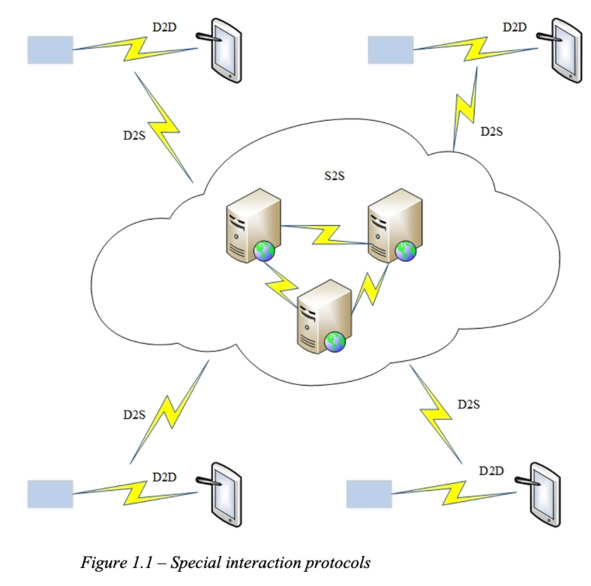
The following protocols of device interaction in IoT are distinguished (Figure 1.2):
– DDS: fast bus for integration of intelligent devices (D2D);
– CoAP: protocol for transmitting node status information to the server (D2S);
– MQTT: protocol for collecting device data and transmitting it to servers (D2S);
– XMPP: protocol for connecting devices to users, a special case of the D2S scheme when users connect to servers;
– STOMP: a protocol for exchanging messages between the device and the server, implemented in different languages and platforms (D2S);
– AMQP: queuing system for connecting servers to each other (S2S).
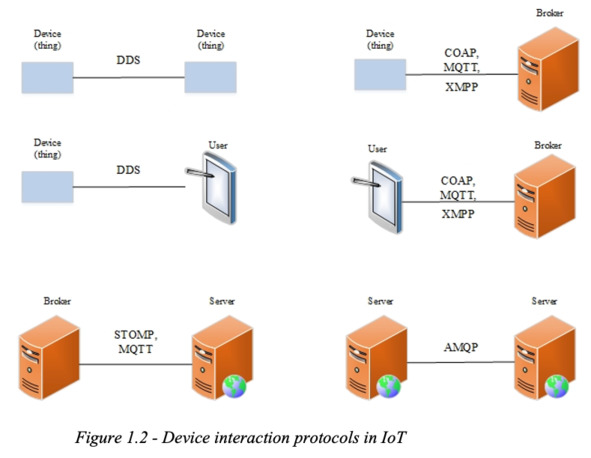
There are three main segments of the IoT technology market in Russia:
– mass market (B2C) or consumer segment: solutions for households and users – pos materials, smart home, banks, etc.;
– market of commercial companies (B2B) or industrial Internet of Things: industry, transport and logistics, finance, agriculture, etc.;
– market of public institutions and state-owned companies (B2G): electric power, housing and communal services, smart city, etc. There is also a so—called cross-industrial segment covering IoT solutions in all areas. [40]
The customer base of communication networks used to be characterized by the number of users, but with the development and increased availability of technologies, most users have several devices, so there is a vector of bias in the evaluation of the customer base by the number of «things» included in the network.
Positive aspects of IoT technology application:
1) The devices in the network are in constant connection with each other, which improves the quality and efficiency of the collected data.
2) The possibility of centralized control of digital information of connected devices and high speed of its output for rapid response is provided.
3) A large amount of data contributes to improving the accuracy of decisions made as a result of their processing, which makes it possible to switch from process modeling to «digital twins» technology.
4) Increasing the speed and quality of managerial decision-making leads to a significant economic effect.
The risks of implementing IoT include:
1) Separate devices are offered on the Russian market,
rather than complex solutions, which does not allow forming a single IoT ecosystem.
2) The complexity of building an IoT is accompanied by a high risk of system error during operation.
3) The scalability of the network of devices transmitting data significantly increases the risk of personal data leakage due to the complexity of monitoring and protecting a distributed network.
4) The introduction of digital systems leads to the automation of technological processes, followed by a reduction in employees and an increase in social tension.
5) The lack of unified connection standards and data transfer protocols, which does not allow combining various wireless networks of objects into a single network. The most common is the MQTT protocol. [40]
The most important differences between the Internet of Things and the existing Internet of people are:
– focus on things, not on the person;
– significantly more connected objects;
– significantly smaller object sizes and low speeds;
– focus on reading data, not on communications;
– the need to form a new infrastructure and new standards.
1.1.2 Internet of Things potential threats
The problem of building IoT in different countries and systems using different protocols may increase in the future when all devices are incompatible and it will not be possible to link them together and collect the necessary data due to the presence of two or more different IoT protocols.
Currently, the most competitive are two approaches to unifying open source platforms to increase the interconnectedness of products and devices – Open Interconnect Consortium (OIC) and AllSeen Alliance.
To understand the necessary technical support for IoT, it is worth considering several factors when approaching IoT security:
– IoT is a developing and rapidly changing area. Adding new features also leads to new vulnerabilities;
– IoT systems include not only sensors, but also software, as well as devices, platforms and infrastructure elements necessary for data transmission over the network, as well as data storage and analysis in the cloud; [30]
– IoT systems must be protected from threats to other networks and users (external security), as well as from threats to their users and property (internal security); [30]
– the Internet is an interconnected network of networks in which the security of each of them affects the security of the others. [30]
Let’s look at some IoT security threats:
– Malware distribution botnets can be used to attack IoT devices connected to the global network;
– Denial of service DoS attack to slow down services and discredit businesses;
– social engineering attacks aimed at illegally obtaining confidential information about users can also be exposed to devices connected to IoT;
– targeted cyber attacks in order to gain illegal control and access to the network while remaining unnoticed for a long period of time;
– ransomware virus;
– remote recording of Internet of Things users in order to obtain confidential data;
– physical damage to equipment controlled by the Internet of Things by obtaining control;
– falsification of data in order to make wrong decisions;
– digital espionage.
As you can see, information in the modern world plays a very important role, especially when it is possible to remotely control various devices or predict the implementation and manage business or technological processes, so cybersecurity issues come to the fore.
Some methods of IoT risk reduction:
– Management and control of Internet of Things endpoints by identifying and adding to the inventory of resources to reduce the likelihood of cyber attacks;
– identify the IT security vulnerability zone;
– detection of abnormal deviations in data during the interaction of devices and servers;
– using a good data encryption system and protocols;
– management control at the identity level to identify users and their actions. Authentication helps companies better understand how users access devices, which increases the level of protection against vulnerabilities and misuse.
It is worth noting that with the development of IoT, it is necessary to guarantee sufficient security of solutions, since they operate with a large amount of confidential data that directly affects the most important production processes. For this purpose, measures are carried out aimed at:
– Security of devices and sensors. Device security is implemented through device authentication, partial message encryption, and sensor firmware updates.;
– Connection protection. Ensuring the confidentiality of data and their protection from unauthorized modification is necessary when transferring data between the device and the IoT platform. Here the protection is based on Transport Layer Security (TLS) technology. At the same time, the data is encrypted to prevent unauthorized listening and understanding of the content.
1.1.3 Authentication as an important factor of the Internet of Things
It is necessary to ensure the following security properties of Internet of Things devices:
1) a reliable access and authentication system based on cryptography. Encryption is necessary to protect communication between iOS devices, and cryptographic device identifiers are needed for this. You need to make sure that only authorized users have access to connected devices;
2) cryptographic security of the software. Using the PKI system to sign the code and verify its authenticity;
3) software updates throughout the entire lifecycle of devices.
From the point of view of ensuring the security of Yota networks should be provided:
1) cryptographic data protection;
2) the absence of critical dependencies on connectivity. Maintaining critical functionality by the system even in the absence of communication;
3) creating an additional device specification that describes in detail the required security policy for a specific device. [31]
The security of the cloud platform is ensured by:
1) control of access to device resources. The application declares a set of resources that it would like to access, while the platform provides a list of devices with these resources. Accordingly, the user gets the opportunity to choose which devices and their capabilities this application can have access to, thereby authorizing the application.;
2) two-factor user authentication technology to increase the level of security;
3) verification of applications for the presence of malicious code. [31]
1.2 Internet of Things in the transport industry
Modern transport management is integrated, much attention is currently being paid to the development of multimodal and intermodal transport, since rail, road, aviation and sea modes of transport are closely interrelated. [66]
As noted in the study [66], in addition to the Internet of Things, cyber-physical systems (CPS) are used to manage transport facilities, and then cyber-physical transport systems (TCPS). They allow you to monitor and control physical devices in real time. An important feature of IoT is the use of mobile smart devices.
Communications between particularly responsible elements in transport play a key role. The functioning of modern rolling stock as a set of interconnected parts is largely provided by smart mobile devices. [66]
In addition to the types of IoT information interaction in TCPS transport cyberspace, V2V (Vehicular-to-Vehicular communications) interaction is often used, based on information interaction between single vehicles based on a variety of sensors that are installed on each mobile object. At the same time, information from individual vehicles enters a single information space for optimal control and interaction of moving objects. [66]
In the field of transport, a special wireless mobile communication network VANET is used. This network allows vehicles to exchange a variety of information over a wireless environment and contributes to the intensification of transportation. [66]
The transport industry plays a direct and significant role in the country’s economy. Many aspects depend on the efficient functioning of the transport system, such as timely delivery of goods to consumers, mobility of passengers in cities, logistics of large industrial institutions. [23,24,27,30]
Experts [30] identify several IoT functions in the transport industry, which include:
– obtaining the necessary data from the transport system;
– measurement of read data;
– providing a wireless connection for the exchange of sent data;
– functioning of a cloud platform to support management decision-making based on predictive analytics;
– implementation of the regulatory impact according to the decisions taken.
For the successful operation of the Internet of Things, several functional levels are distinguished:
– the level of communication channels;
– analytical level;
– service level;
– the level of infrastructure.
The communication channel layer helps in transmitting data from the analytical layer through various networks. An important factor in the development of the level of communication channels is the issue of data transmission security. In addition, it is necessary to take into account the speed and transparency of data transmission.
At the service level, actions are performed that are transferred from the technical level in accordance with customer requirements. The service layer receives detailed information from the analytical layer through the communication channel layer. The received information is processed in different ways and detailed analysis is carried out by various computing tools.
The infrastructure layer is the layer that creates the technology necessary to perform various services and store the information received. This includes the geoinformation system service, cloud computing platform, cloud storage, Big Data analysis tools, etc.
In the transport industry, digital technologies should allow the transition to paperless technologies in the operation and design of any transport services, provide comprehensive monitoring of the state of transportation and transport infrastructure facilities.
It is worth noting the very important role of IoT in the tasks of monitoring infrastructure and vehicles, the use of which allows:
– to take into account the work done, as well as the energy or resources spent on it;
– to predict based on the results of data analysis of the pre-failure condition of the facility, for the implementation of operational measures and prevention of traffic safety violations;
– automate maintenance and determination of pre-failure states;
– to carry out operational changes in the vehicle control mode on the studied infrastructure in case of detection of dangerous failures. [51]
With the help of IoT technologies, it is possible to conduct intelligent tracking of the movement of vehicles, their location at the current time, working hours and parking time, attempts to enter the body of the vehicle, etc.
The use of elements of the Internet of Things technology allows you to measure the internal conditions inside the vehicle body during transportation (temperature, humidity, lighting conditions, etc.). The Internet of Things can also be used in vehicle control and navigation systems. Real-time monitoring of vehicles using IoT tools allows for efficient delivery of products to consumers in megacities.
The use of IoT makes it possible to significantly improve the quality of public transport services, to reorient the vector of preferred use of vehicles in the structure of the transport process from personal to public transport and, thus, reduce the load on the road network. [38]
Systems based on geolocation technologies in conjunction with the Internet of Things have also been widely developed, which allow linking information in a single network about the movement of vehicles, which allows real-time forecasting of the exact time of arrival of the desired object to the stopping point [69,70,71] Wide access for a large number of users via devices connected to the Internet, allows significantly improve the quality of decisions made by passengers on the implementation of a convenient travel option.
An important criterion for the implementation of the development of the transport infrastructure of the passenger complex is the accuracy of the analysis and forecasting of passenger flows. Most of this data is obtained by consolidating information about the number of people who have passed, taking into account the time of day, from sensors located in turnstiles [25,26,28].
The development of predictive analytics systems on the impact of weather events and weather emergencies on the restriction of transport, based on IoT data, allows for early adjustment of the timetable, notifying the population and transmitting a signal about the mobilization of emergency services.




